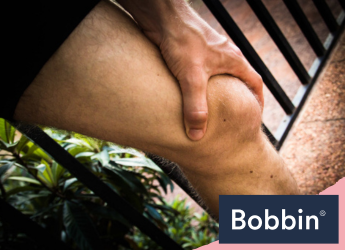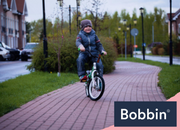Most Frequent Cycling Injuries and How to Treat Them
Cycling is a thrilling blend of freedom and fitness. While the benefits are immense, the exhilaration comes with a price: injuries. Your safety is of utmost importance, and acknowledging the potential risks helps.
In this guide, we’ll delve into the most common cycling injuries. Come along as we pedal through these pains, revealing ways to treat and prevent them.
Road Rash

Road rash happens when your skin rubs against rough surfaces during a fall while cycling. It appears as red, raw skin abrasions, often accompanied by minor bleeding. The affected area can be painful and swollen, resembling a scraped area. How bad it is depends on how hard the fall was and if protective gear was worn.
In such an unfortunate case, immediate first aid is essential. Begin by cleaning the affected area with soap and water. Next, put on antiseptic ointment, then cover it with a bandage.
Tip: To avoid road rash in the fall, wear autumn cycling clothes, gloves and knee pads. These steps help prevent injuries, ensuring safer and more enjoyable bike rides.
Muscle Strains
Muscle strains during cycling happen when muscles are stretched beyond their limits. They often present as soreness, swelling, or muscle spasms, causing pain and discomfort. To ease the ache, the RICE method is effective:
- Rest: Give your muscles a break to heal.
- Ice: Apply ice to reduce pain and swelling.
- Compression: Wrap the affected area to provide support.
- Elevation: Raise the injured part to minimise swelling.
Do some easy stretches and light exercises before cycling to get your muscles ready. This reduces the chance of strains. Warming up makes your muscles more flexible and improves blood flow. It also helps you have a smoother ride while preventing muscle discomfort.
Knee Pain

Bike knee pain can result from various factors. This includes improper bike setup, overuse, or muscle imbalances. Identifying the specific cause is crucial for effective relief.
Engage in exercises and stretches to alleviate knee pain. Strengthening the quadriceps and hamstrings can help reduce discomfort. Low-impact activities like cycling on a stationary bike can also aid in recovery.
Ensure your Bobbin bike is properly adjusted to minimise strain on the knees. The seat must be at the right height, the pedals are aligned, and the shoe cleats positioned correctly. Regular bike maintenance and fittings are essential for sustained knee health. Both ensure your commuter bike is in good condition and well-adjusted.
Fractures
Fracture symptoms involve severe pain, swelling, and deformity at the injury site. Take immediate action to ensure the well-being of the injured person. For instance, someone experiences a fall while riding a hybrid bike or during a family bike ride. If there’s a suspicion of a fracture, follow these steps:
- Keep the injured part still: Use something like a stick or rolled-up magazine for support.
- Call for help: Especially do so if you’re far from immediate medical assistance. Use a phone to call emergency services.
- Don’t move too much: Tell the injured person to stay still and comfortable. Reassure them until professional help arrives. These steps help prevent more harm and make it easier for them to get medical care.
Sprained Ankles
Ankle sprains during cycling often result from sudden twists or uneven terrain. This often leads to the ligaments around the ankle being stretched or torn.
In the event of an ankle sprain, immediate rest is essential. Allow the injured ankle time to heal by avoiding weight-bearing activities, e.g. running or heavy lifting. Rehabilitation exercises, including gentle stretches and controlled movements, promote recovery and prevent stiffness. Consultation with a healthcare professional for tailored guidance is advisable.
Tip: Avoid cycling with a sprained ankle. To reduce such risks, include strengthening exercise in your routine. Focus on balance and stability exercises, such as calf raises and ankle circles.
Lower Back Pain
Lower back pain in cyclists often stems from prolonged, hunched-over riding positions. The constant flexion and vibration from the road contribute to discomfort. Stretching the hip flexors and hamstrings helps alleviate tension. Meanwhile, strengthening core muscles provides crucial support to the lower back. Incorporate exercises like pelvic tilts and planks for comprehensive relief.
For pelvic tilts, lie on your back with your knees bent. Gently lift your pelvis towards the ceiling, then lower it. As for planks, hold a plank position, keeping a straight line from head to heels.
Tip: Optimal sprung saddle height and handlebar positioning promote a more upright posture.
Neck Pain
Neck pain often results from maintaining a fixed, forward-leaning position during rides. Poor bike fit, inadequate flexibility, and prolonged neck extension contribute to discomfort. Combat with targeted exercises and stretches. Incorporate gentle neck tilts, rotations, and stretches to alleviate tension. Strengthening exercises for the neck and upper back muscles can provide added support.
Tip: Perform periodic neck stretches during rides to maintain flexibility.
Elbow Pain
This often comes from holding the handlebars too tightly, pressing on the ulnar nerve. Poor bike fit, bad posture, and repeated stress on the elbows can also cause discomfort.
So, when your elbow hurts, give it a break. Do gentle stretches like bending your wrist. Also, consider strengthening exercises for your forearm to help it recover. Hold a small weight or a resistance band. Flex and extend your wrist, engaging forearm muscles.
Make sure your bike fits well with comfortable handlebar positions. Hold the handlebars loosely, keeping your elbows slightly bent. Change hand positions regularly to reduce pressure. These steps improve blood flow and lessen cycling elbow pain.
Pain in the Hip

(Image Credit: Wikimedia Commons)
Hip pain often happens when bikes aren’t set up right, causing muscle and joint strain. Sitting on an uncomfortable seat or having pedals in the wrong position are also factors. Do exercises and stretches to help with hip pain. Stretch your hip muscles with exercises like leg lifts and side leg raises.
For leg lifts, lie on your back, lifting one leg towards the ceiling. Then, lower it without touching the ground. Repeat for each leg, strengthening hip muscles. To perform side leg raises, lift the top leg sideways (while lying on your side), then lower it. Alternate sides.
Tip: Make sure your or your kids bike fits well. Set the saddle at the right height, align the pedals correctly, and use a comfortable seat.
Basic Cycling Safety Tips and Equipment
(Mirror Mirror Bike Helmet Gold)
Prioritise safety by wearing a well-fitted Bobbin helmet, gloves, and other essential gear. Helmets protect your head in case of falls, while gloves offer grip and hand protection. Additional safety gear, like reflective clothing, enhances visibility, especially during low-light conditions.
Regular bike maintenance is vital for injury prevention. Check brakes and tyre pressure, and ensure all parts are in working order. A well-maintained bike reduces the risk of accidents caused by mechanical failures.
Adhere to traffic rules and practice responsible cycling. Signal turns, use designated lanes, and be aware of your surroundings. Ensure safer riding by following these bike adjustments and cycle lane rules.
FAQ
Is cycling good for knee ligament injury?
Cycling can be beneficial for knee ligament injuries as it’s a low-impact exercise. Ensure proper bike setup, gradual intensity, and use a higher gear to reduce strain. Consult with a healthcare professional for personalised advice.
Is cycling bad for your back?
Cycling is generally spine-friendly. Ensure a proper bike fit and maintain an upright posture. Also, consider doing core-strengthening exercises to support your back. If discomfort persists, consult a healthcare professional.
How to treat a sore bum after cycling?
To relieve a sore bum, invest in a well-padded seat. Moreover, wear padded shorts, and consider adjusting the saddle height and angle. Apply a soothing cream and take short breaks during rides to alleviate discomfort. If soreness persists, consult with a healthcare professional.









